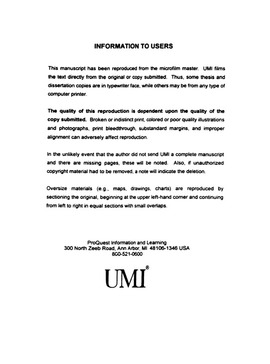| dc.contributor.advisor | Shrock, Dennis, | en_US |
| dc.contributor.author | Woodruff, Neal Wayne. | en_US |
| dc.date.accessioned | 2013-08-16T12:18:51Z | |
| dc.date.available | 2013-08-16T12:18:51Z | |
| dc.date.issued | 2002 | en_US |
| dc.identifier.uri | https://hdl.handle.net/11244/550 | |
| dc.description.abstract | For Group 2, acoustic placement alone provided the best alliance of acoustic analysis and auditor/singer preference, at a rate of 50% each for close and lateral spacing. Attention to acoustic placement alone was shown to be superior to spacing alone, and the combination of acoustic placement and close spacing was shown to be equal to the combination of acoustic placement and lateral spacing. | en_US |
| dc.description.abstract | For Group 1, the combination of placement and lateral spacing provided the best alliance of acoustic analysis and auditor/singer preference, at a rate of 54% for placement/lateral spacing and 46% for placement/close spacing. Attention to acoustic placement alone was shown to be superior to spacing alone, and the combination of acoustic placement and spacing was only slightly more successful than placement alone. | en_US |
| dc.description.abstract | Two groups of three male singers were formed. Both groups were recorded in each possible solo, duet, and trio formation. The results were acoustically analyzed, anonymously considered by choral directors and voice teachers, and considered by the individual singers; the combination of acoustic analysis, auditor preference, and singer preference revealed specific trends with regard to both blend and vocal function. | en_US |
| dc.description.abstract | It was the purpose of this study to examine and quantify the acoustic interaction of voices in ensemble, with specific consideration to the differences between placement (how voices respond to adjacent voices) and spacing (how voices respond to differences in the space between adjacent voices). This study, further, investigated whether there was any discernible acoustic phenomenon that delineated or defined when a vocal match was made, or if a vocal match was merely a matter of conductor preference. The acoustic data, further, were to be compared with the blend preferences of choral directors and voice teachers, and the preferences of the individual singers used. Information was collected concerning the acoustic appearance of choral blend. A reductionist approach regarding the variables for the study permitted detailed, quantifiable data pertinent to these aims. | en_US |
| dc.description.abstract | Proponents of voice matching procedures advocate using them as a primary tenet of ensemble auditions. Confirmation of the variable nature and availability of spacing necessitates a more consistent blending procedure, such as voice matching, for the customary settings of choral ensembles. The acoustic corroboration that voice matching reduces the requisite individual vocal change for singers in ensemble, provides the possibility to begin to reduce any requisite tensions between choral directors and teachers of singing with regard to differences of vocal practice. | en_US |
| dc.description.abstract | The findings demonstrate that, when no attention is given to voice matching, lateral spacing may reduce the amount of individual vocal change and contribute to ensemble blend. Should no vocal match be discovered, the combination of acoustic placement and spacing reduces the amount of individual vocal change within ensemble blend. When a vocal match is discovered, specific attention to voice matching contributes to the reduction of vocal change and the overall effect of blend, and may be equally effective in close or lateral spacing. | en_US |
| dc.format.extent | viii, 204 leaves : | en_US |
| dc.subject | Musical pitch. | en_US |
| dc.subject | Music. | en_US |
| dc.subject | Musical analysis. | en_US |
| dc.subject | Singing Instruction and study. | en_US |
| dc.subject | Physics, Acoustics. | en_US |
| dc.subject | Choral singing Instruction and study. | en_US |
| dc.subject | Education, Music. | en_US |
| dc.title | The acoustic interaction of voices in ensemble: An inquiry into the phenomenon of voice matching and the perception of unaltered vocal process. | en_US |
| dc.type | Thesis | en_US |
| dc.thesis.degree | D.M.A. | en_US |
| dc.thesis.degreeDiscipline | School of Music | en_US |
| dc.note | Source: Dissertation Abstracts International, Volume: 63-12, Section: A, page: 4151. | en_US |
| dc.note | Major Professor: Dennis Shrock. | en_US |
| ou.identifier | (UMI)AAI3075332 | en_US |
| ou.group | Weitzenhoffer Family College of Fine Arts::School of Music | |
